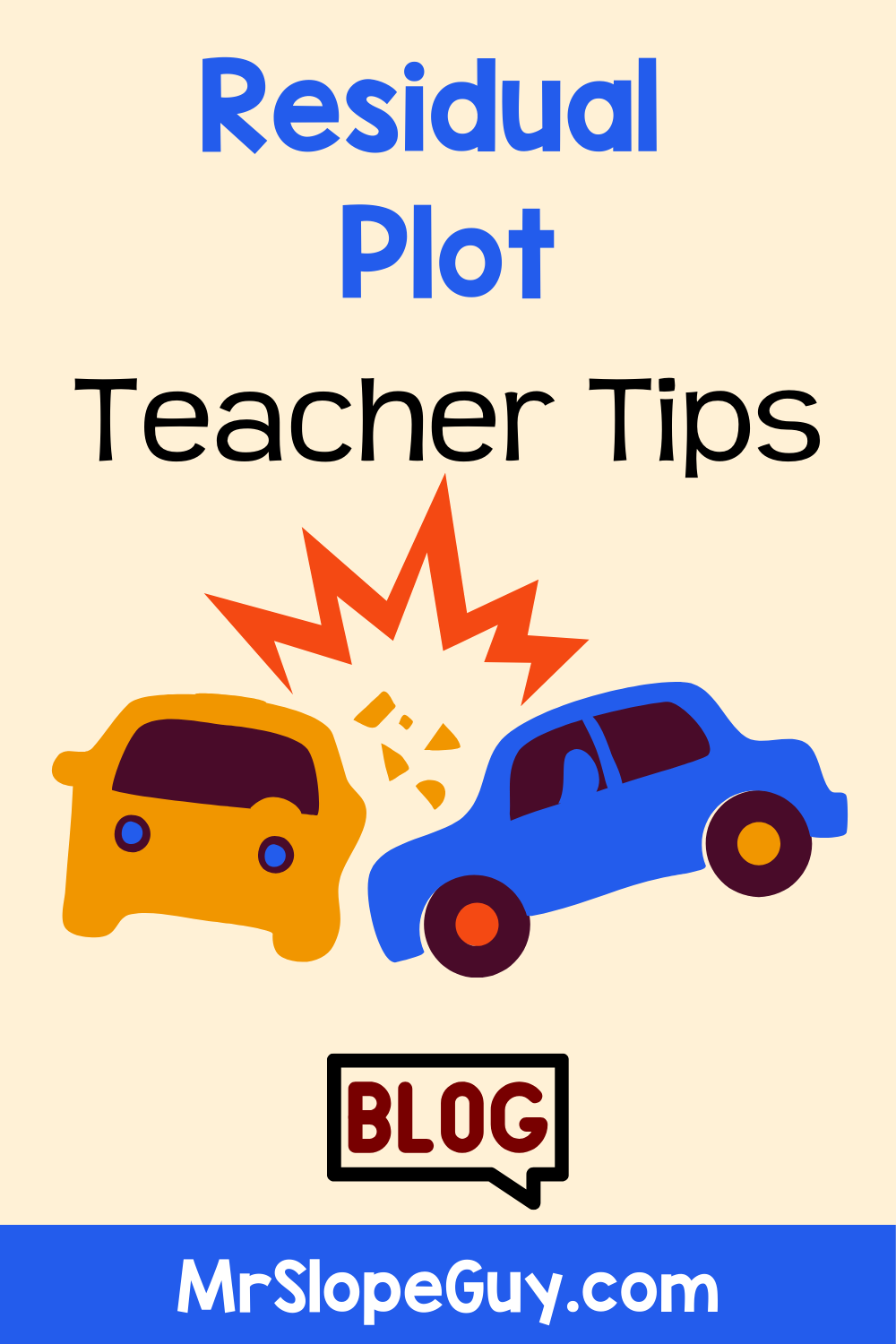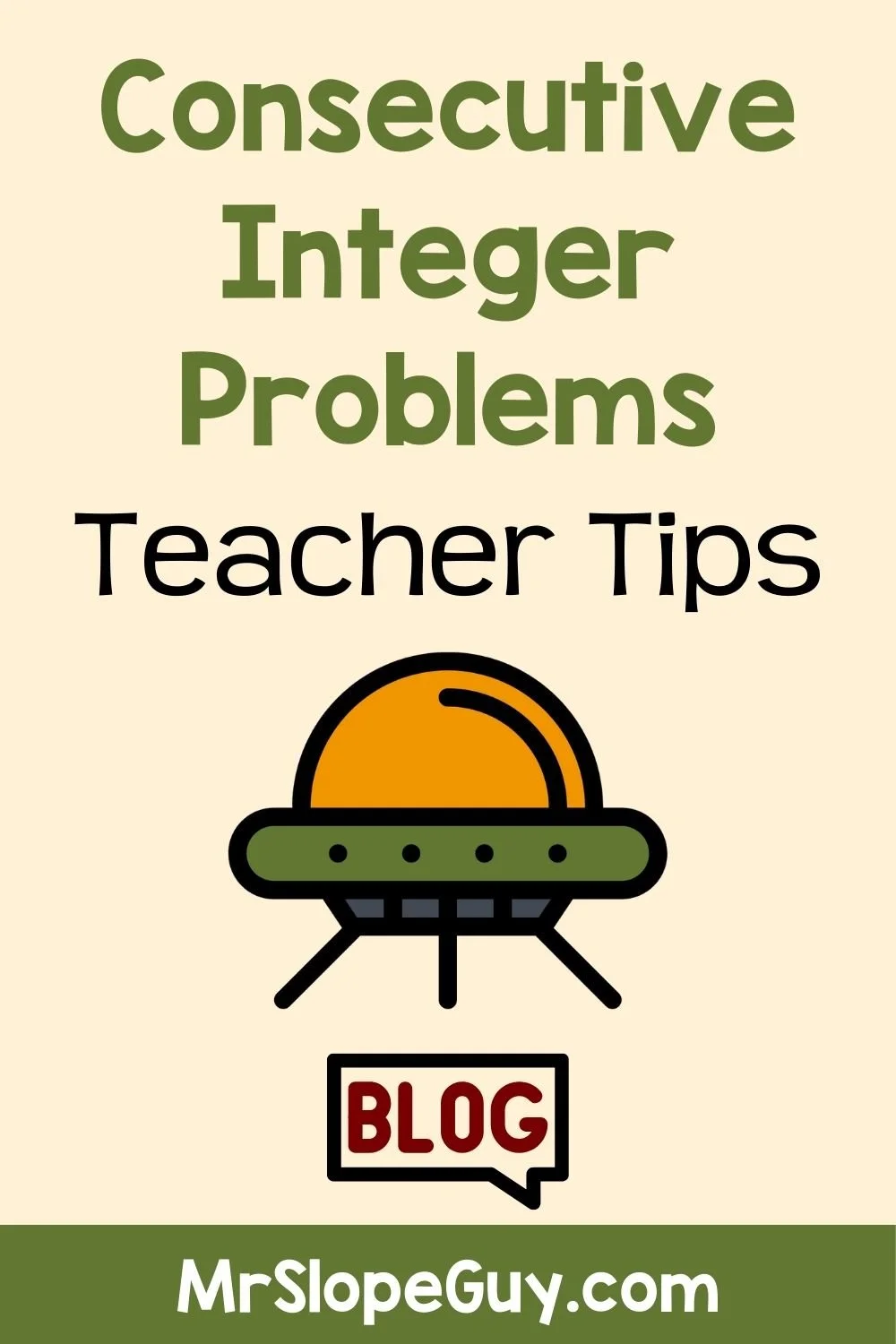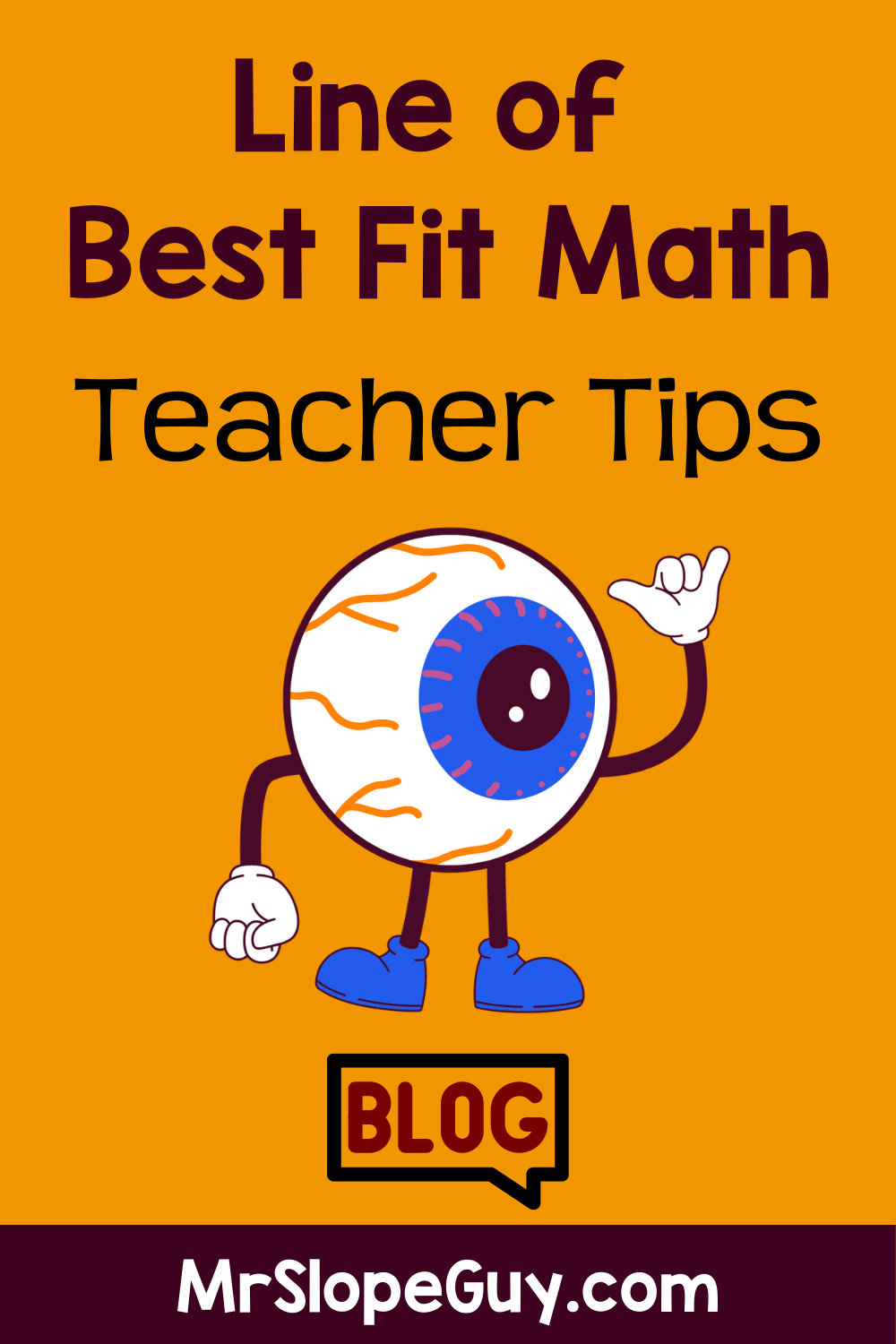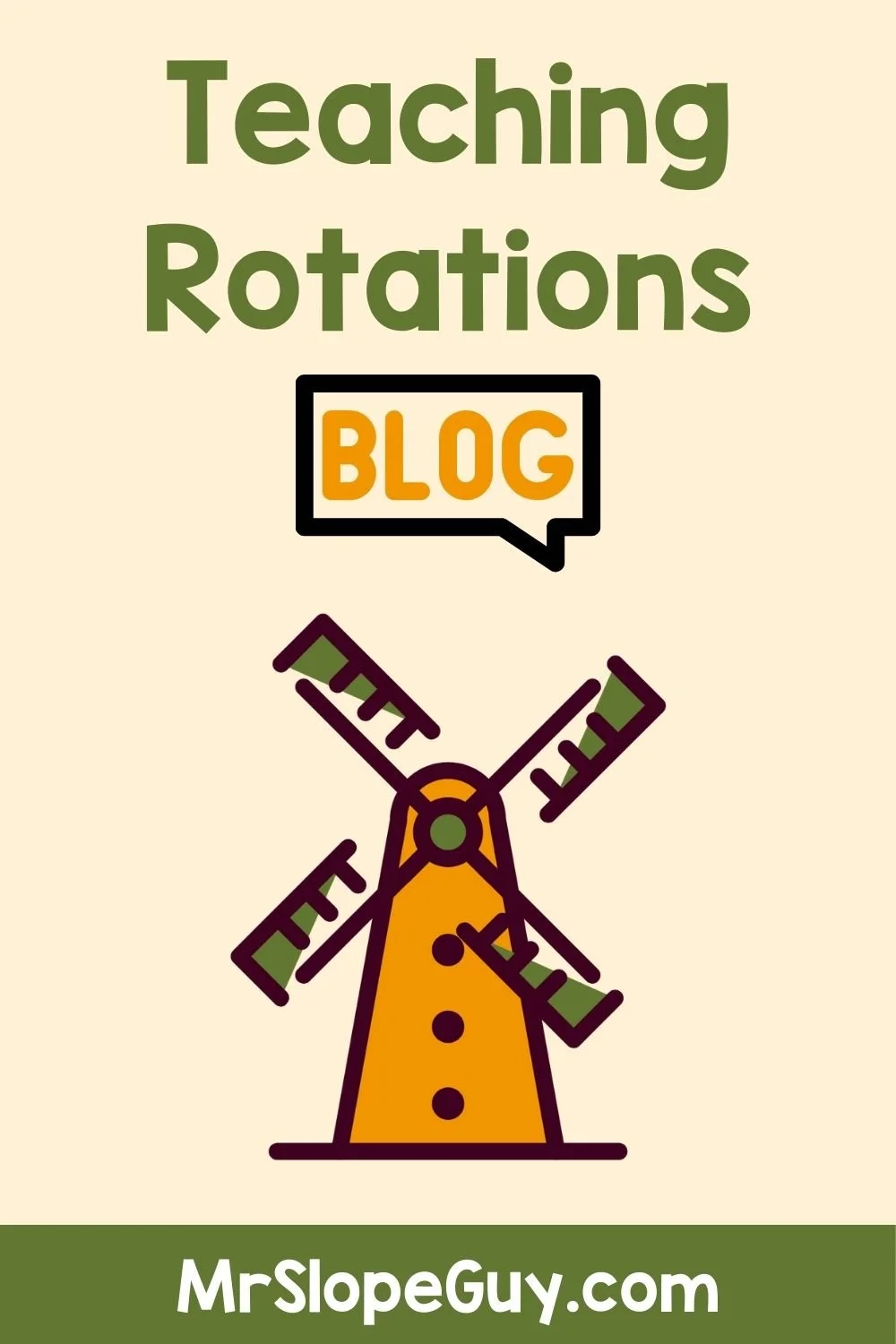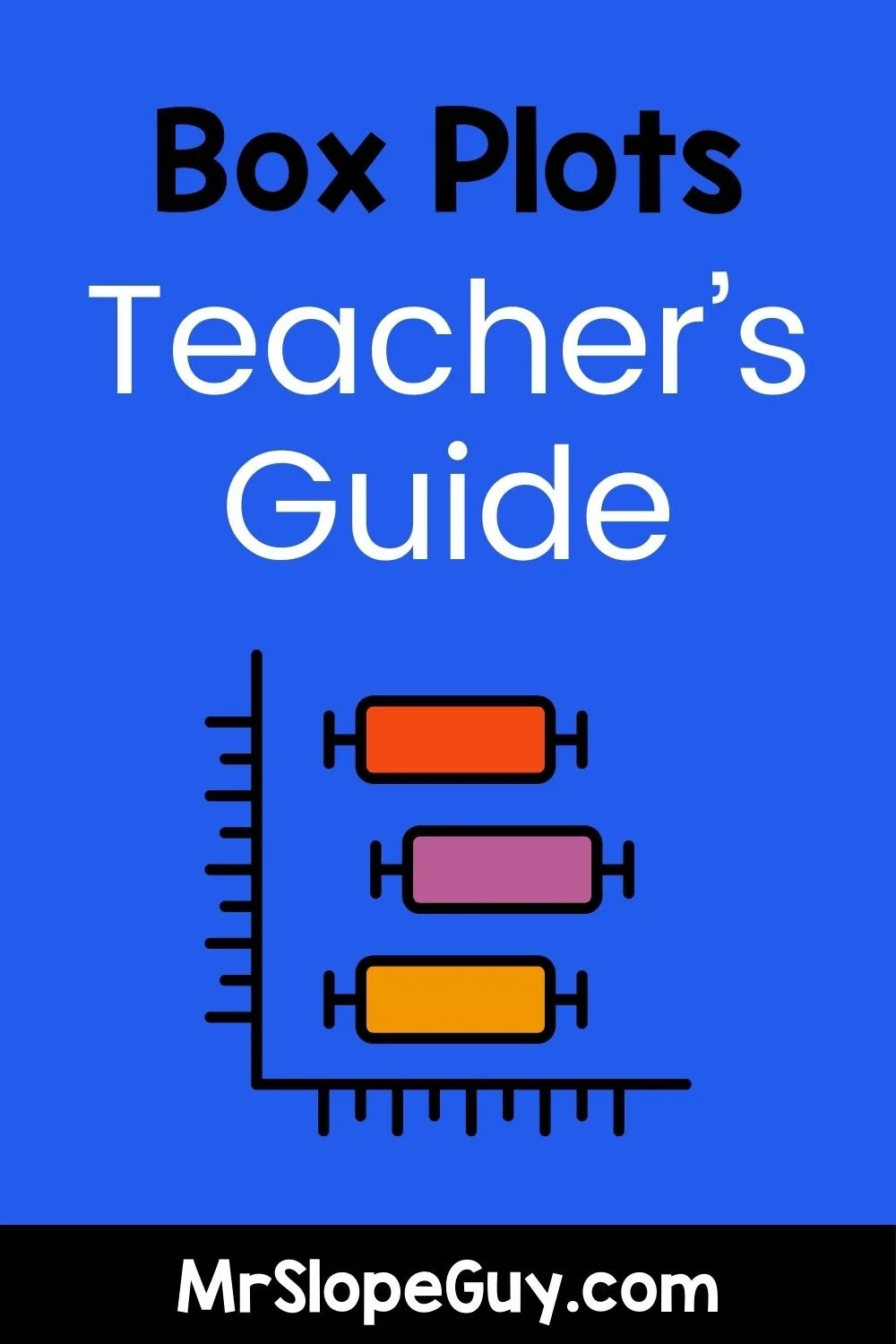📐 Math is Totally Radical: Cube and Cube Roots with an 80s Twist! 🎸 By Mr. Slope Guy
Break out the neon and rewind to the raddest decade of them all—because Mr. Slope Guy is about to take you on a gnarly journey through cubes and cube roots with a totally tubular 1980s flair! From Rubik’s Cube visuals to real-world 3D volume problems, this lesson brings retro energy to a classic math concept. Learn how cube roots unlock problem-solving power, reinforce volume understanding, and make your students feel like math rockstars. Plus, get access to a classroom-ready worksheet and QR-coded video support! Whether you’re teaching in a classroom or homeschooling in leg warmers, this blog has everything you need to cube it up with style.
🍕 Slope Sauce and Pizza Toppings: Cooking Up Slope-Intercept Form
How do you make slope-intercept form relatable for middle schoolers? Add pizza, of course! In this blog, we explore how using a real-world pizza pricing model — with a little help from fictional chefs Giovanni, Rosa, and Mario — can transform confusing algebra concepts into a deliciously understandable lesson. Plus, Mr. Slope Guy makes a cheesy stop at the World’s Largest Pizza Cutter in Erie, Pennsylvania! Slice into fun, real-world applications of slope and y-intercept that will leave your students hungry for more math.
Gnomes on the Grid: Teaching Slopes of Parallel and Perpendicular Lines
Tired of blank stares when teaching parallel and perpendicular lines? Enter the slope gnomes—tiny, determined math helpers ready to make linear equations come alive. This engaging blog uses whimsical garden gnomes to help middle school and algebra students master the concept of slope, whether they’re walking in perfect parallel or colliding at 90° angles. With vivid analogies, classroom activities, and graphing tips, your students will finally understand (and enjoy) the difference between “same slope” and “opposite reciprocals.
Sum It Up: Why Polygon Angles Always Add Up
Why do the interior angles of polygons always add up the way they do? It all starts with triangles—and a catchy tune doesn’t hurt either. In this engaging post, we explore the logic behind the (n – 2) × 180° formula, walk through examples with different polygons, and show how a fun song and hands-on activities can help students connect the dots. Whether you're teaching triangles, quadrilaterals, or decagons, you'll find creative strategies to make polygon angle sums stick (and maybe even hum along the way).
Normal Distribution in Statistics: Why the Bell Curve is Everywhere
Ever wonder why so many real-world data sets—like test scores, heights, and IQs—seem to follow the same smooth curve? That’s the power of normal distribution in action. In this post, we break down what makes the bell curve so special, explore why it keeps popping up in real life, and offer fun, classroom-friendly ways to teach it using real data, predictions, and engaging activities. Whether you're a teacher or a curious learner, this is your guide to understanding the shape that defines so much of the statistical world.
Rational Exponents and Radicals: Helping Students Make the Connection
Many algebra students struggle with the transition from radicals to rational exponents. While they seem like different concepts—one involving roots and the other involving fractional exponents—the two are deeply connected. This blog offers teaching strategies, including side-by-side comparisons and real-world applications, to help students bridge the gap between radicals and rational exponents. By making this connection clear, students can master exponent rules and apply them to more complex algebraic concepts with confidence.
Linear vs. Non-Linear Functions: Teaching Students to Spot the Difference
Linear functions follow steady, predictable patterns, while non-linear functions break the mold with rapid changes and unexpected twists. From a court jester’s joke shop selling pranks at a constant rate to an ant farm multiplying exponentially, this blog explores real-world examples that make these mathematical concepts more engaging. Discover fun activities and creative ways to help students distinguish between linear and non-linear functions!
Teaching Standard Deviation with Real Data: From Sports Stats to Science
Standard deviation doesn’t have to be a scary math concept! By using real-world examples—like bowling scores, baseball stats, and science experiments—students can see how standard deviation measures consistency vs. variability. Whether analyzing player performance, experimental data, or test scores, this concept plays a crucial role in making data-driven decisions. Get ready for a fun, engaging lesson that brings math to life!
Why We Teach Volume of a Cylinder, Cone, and Sphere Together?
Teaching the volume of cylinders, cones, and spheres together offers students a meaningful way to connect mathematical concepts with real-world examples. The volume formulas for these shapes share a common structure, making them a natural fit for a combined lesson. For example, the volume of a cone is one-third that of a cylinder with the same height and radius, and spheres can fit perfectly into cylinders in certain scenarios, like a can of tennis balls. By using fun, relatable examples such as tennis balls, ice cream cones, and basketballs, students gain a deeper understanding of these shapes and how their formulas relate to one another. This approach not only makes math more engaging but also helps students visualize the concepts rather than just memorize formulas.
Why Do Students Need to Simplify Radicals with Variables?
Simplifying radicals with variables is a crucial skill that prepares students for Algebra II, Pre-Calculus, Calculus, and standardized tests like the SAT and ACT. This concept strengthens their understanding of exponent rules, improves problem-solving efficiency, and builds confidence in advanced mathematics. By connecting radicals to exponents, using step-by-step breakdowns, and incorporating visual learning strategies, educators can make this topic more approachable. Want engaging practice worksheets? Check out my Teachers Pay Teachers store! 🚀
The Quadratic Formula Song: A Math Teacher’s Secret Weapon
Memorizing formulas isn’t always the highlight of learning algebra, but what if you could make it fun? Enter: the Quadratic Formula Song, a legendary YouTube video that has helped students remember one of algebra’s trickiest formulas for nearly two decades.
With rapping Jedi, dancing babies, and an earworm of a tune, this video takes the quadratic formula and burns it into students’ brains—permanently. Don't believe me? Just ask the countless YouTube commenters who still recall it years later!
Discover how this viral hit can transform your math classroom and turn memorization into a musical experience your students will never forget.
Residual Plots: A Powerful Tool for Data Analysis in Math Class
Residual plots are a game-changer for teaching data analysis in math class! These visual tools help students evaluate the accuracy of regression models, revealing hidden patterns and strengthening their statistical reasoning. By integrating engaging activities and real-world applications, educators can transform residual plots from an abstract concept into a powerful skill for data-driven decision-making.
Consecutive Integer Word Problems: Defending Earth from an Alien Invasion!
Consecutive integer word problems have been a staple of Algebra 1 for decades, helping students develop essential problem-solving skills. While they may seem old-fashioned, these problems remain highly relevant, appearing frequently on standardized tests. By adding an exciting alien invasion theme, educators can turn routine practice into an engaging and interactive lesson. This approach enhances student participation while reinforcing key algebraic concepts. Get ready to defend Earth—one equation at a time!
Eyeballing the Line of Best Fit: Building Estimation Skills in Math Class
Teaching students to estimate the line of best fit bridges the gap between intuitive data analysis and formal statistical tools. This blog explores engaging strategies for building estimation skills, addressing common misconceptions, and making math lessons more interactive and fun with real-world data.
Teaching Rotations on the Coordinate Plane: Engage Students with Manipulatives
Unlock the power of hands-on learning with manipulatives to teach rotations on the coordinate plane! Rotations can be challenging for students to grasp, but using tools like clear plastic plates transforms abstract concepts into tangible learning experiences. This step-by-step guide will help your students visualize coordinate transformations, uncover patterns, and build a deeper understanding of geometric rotations. Whether it’s a 90° turn or a 180° flip, engaging activities like these will keep your students inspired and confident in math class.
Teaching Scatterplots: Building Foundations for Data Analysis
Scatterplots are pivotal in math education, bridging raw data with insightful analysis. They visually represent relationships between variables, paving the way for understanding correlations, residual plots, and predictions in real-world contexts.
Algebraic Proofs: Helping Students Apply Properties of Equality like a Champion
Teaching algebraic proofs doesn't have to feel daunting! By focusing on the properties of equality and step-by-step reasoning, you can turn this challenging topic into an engaging and approachable learning experience. In this blog, discover practical strategies, real-world examples, and interactive activities that will help your students master the art of algebraic proofs while developing critical thinking skills for future math success.
Engage Your Middle School Pre-Algebra Students with Colored Pencils
Engage your middle school pre-algebra students by adding a splash of color to your lessons! Using colored pencils can transform abstract math concepts like transformations and angle relationships into engaging, hands-on learning experiences. This simple tool fosters visual understanding, boosts student confidence, and makes math more enjoyable for everyone.
Why We Teach Scientific Notation: Making Sense of Big Numbers in Middle School Math
Scientific notation might not dominate advanced math classes, but it’s a crucial tool for helping students understand the vast range of numbers they encounter in science and everyday life. From comparing the weight of a blue whale to an ant to comprehending a trillion dollars, scientific notation simplifies the extremes of size and scale. By teaching this concept, educators help students build number sense, strengthen exponent skills, and tackle real-world data with confidence.
Using Box Plots to Hit Home Runs in Math: A Teacher's Guide to the "Box and Whisker" Plot
Box plots, also known as "box-and-whisker plots," are a fantastic tool for visualizing data and understanding statistics. This guide explores their history, explains their role in teaching math, and uses baseball stats as a real-world example to bring this concept to life. Learn how to teach box plots effectively and help students hit a home run in their data analysis skills!













